On November 3, 2021, Kodak announced a film price increase of 9-15% and the film community let out a collective sigh of exhaustion citing a lack of support and commitment to the film community by film manufacturers.
This prompted two, high-profile, attempts at bringing order to the madness. Silver Grain Classics and Nico who, in similar ways explained that 1) when accounted for inflation, current film prices are in line with inflation and 2) there are good reasons for the price increase such as investment in personnel, machinery, environmental reasons, COVID related supply chain issues, etc.
Both of those responses are well thought out, were seemingly well-received, and I agree with both wholeheartedly. The authors should be commended.
Neither of those explanations, however, help mitigate the pain of learning about a 10%, 15%, or 20% price increase. Pain and emotion are not logical. Math and logic don’t change how we feel.
A Math Problem
It’s my view that whilst price increases are unwelcome, the film community may have a math problem rather than a price increase, inflation, or Kodak problem.
I am not a psychologist. I am not a statistician. I am a radiologist and a photographer with no domain experience in either math or psychology. Keep that in mind. I do, however, have decades of experience in running businesses and watching employees, customers, and colleagues unsuccessfully wrestle and fight to understand percentages of small numbers. I think that this is exactly what we are seeing in the film community with the latest price increase. For example, which feels worse:
- I am going to raise your prices by 15%?
- I am going to raise your price by $1.50?
My bet is you picked number 1 because a 15% price increase in anything sounds terrible. The fact of the matter is that #1 and #2 in the above example are exactly the same when it comes to the price increase of film in late 2021. Until now, film cost me $9.99/roll (Portra 400) or less (Proimage 100).
In my experience, people are also poor mathematicians when they extrapolate small numbers into the future. In my estimate, film hobbyists shoot more or less 20 rolls of film per year which brings us to two additional options for your consideration:
- Continue to do your hobby that you love for an additional $3.33 per month OR
- Stop your hobby completely
I bet most film photographers would pick number 1 without thinking about it not realizing that that is all Kodak is really asking us to do with the recent price increase. Hobbies are neither free nor free from inflation. The world is a mess post COVID. Inflation is everywhere.
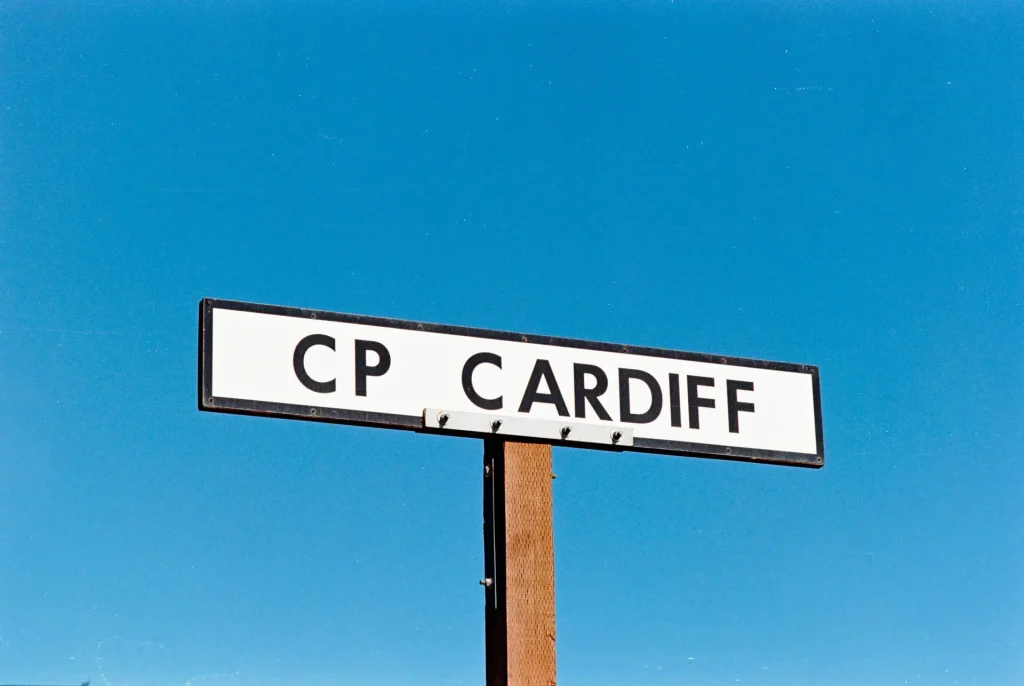
Real Terms 6% Cost Increase
For many, the cost of your photography hobby is probably only going up 6%. If you send film to a lab where the cost of processing is $15.00/roll to develop and scan, the price of your photography hobby is only going up 6% when you consider the total cost of photographing, developing, and scanning a roll of film.
This is another example where thinking in percentages is misleading. The total cost of a roll for you to send it to a lab to develop is currently $25.00. A price increase of $1.50 over something that costs at least $25.00 is only 6% which, at least to me, doesn’t feel like it is worth the outrage we are seeing online towards Kodak.
The Pain of Anchoring
The previous examples are intended to demonstrate how our thinking about numbers is not always rational and perhaps how reframing the situation can change our outlook.
If you read the book, Thinking Fast, Thinking Slow by Daniel Kahneman, this should come as no surprise. My arm-chair psychologist summary of the book is that we all have cognitive biases and faults in our decision-making process that cloud our thinking and allow our emotions to get the best of us.
One of the topics discussed in that book is anchoring. Anchoring is a heuristic that describes the subconscious use of irrelevant information, such as the price you are currently paying for film, as a fixed reference point (or anchor) for making subsequent decisions about that price. I contend that anchoring is causing at least some of our pain with this film price increase and we can help mitigate that pain if we understand what is going on.
Anchoring is used in sales all the time. Real estate agents overprice a house when it is put on the market to make you think that it is worth more than it is. Sellers raise the price of an item and then put it on sale so you think you are getting a bargain even when you aren’t. Anchoring is even why prices tend to end in a number 9.
With respect to the film price increase, we are all anchored to the current price we are paying for film. That price is so embedded in our brain that any change from that price makes us feel like we are getting either a bargain or ripped off. A change in price causes an emotion. Prices are not emotion neutral. The pain we feel from a price increase is irrationally painful even if the actual cost of the price increase is insignificant or will enable us to do our hobby for years to come.
The Errors of Confirmation Bias
Confirmation bias is another of our cognitive deficiencies. In short, we search for evidence to support our thinking. If you shoot film, I will go out on a limb and paint a portrait of someone who is at least a little outside of the mainstream. My bet is that you aren’t entirely keen on Wall Street running the world. Going further, it is likely that you believe that corporate greed is more common than corporate generosity.
If that describes you (it certainly describes me) it is possible that you (like me) lose your mind when you hear that a mega-company is raising prices and assume that price increases are there to stuff the corporate coffers and screw the little guy. I then look for reasons to support my conclusions. For example, silence from the company about why there is an increase leads me to believe that there is no reason other than to screw me. If it weren’t, they would offer us a reason, right? Heck, even if they give a reason, my first, often incorrect assumption is that they are lying.
The problem with these cognitive biases is that even if we know they are happening, and even though we know they are wrong, we can’t always stop them from affecting your decisions, stop us from ranting on Twitter about how bad Kodak or Fuji are, and we can’t even stop feeling the pain of a price increase. Our outrage is a bug in the machine.
To help prove this point I offer you two scenarios to consider:
- What if Fuji, rather than discontinuing Pro400H, said “We will increase the price by $2.00/roll and keep producing Pro400h.”
- What if Kodak said, “There is going to be a price increase to $13.99 per roll of film but to offset that price, you can buy a 5 pack at $11.49/roll of film. If can agree to that, we will continue to make film for 5 years and we think we can have better distribution and availability.”
Neither of the companies actually said that but I would have to assume that many of us wished they did. Compared to stopping film production or a price increase of 15%, both of those feel like a good deal right. Who wouldn’t want Pro400H back – whatever the price? Who cant pay an extra $1.49 per roll of film? They are both a price increase in sheep’s clothing but they short circuit the emotions we have when we hear about an across the board price increase of X%
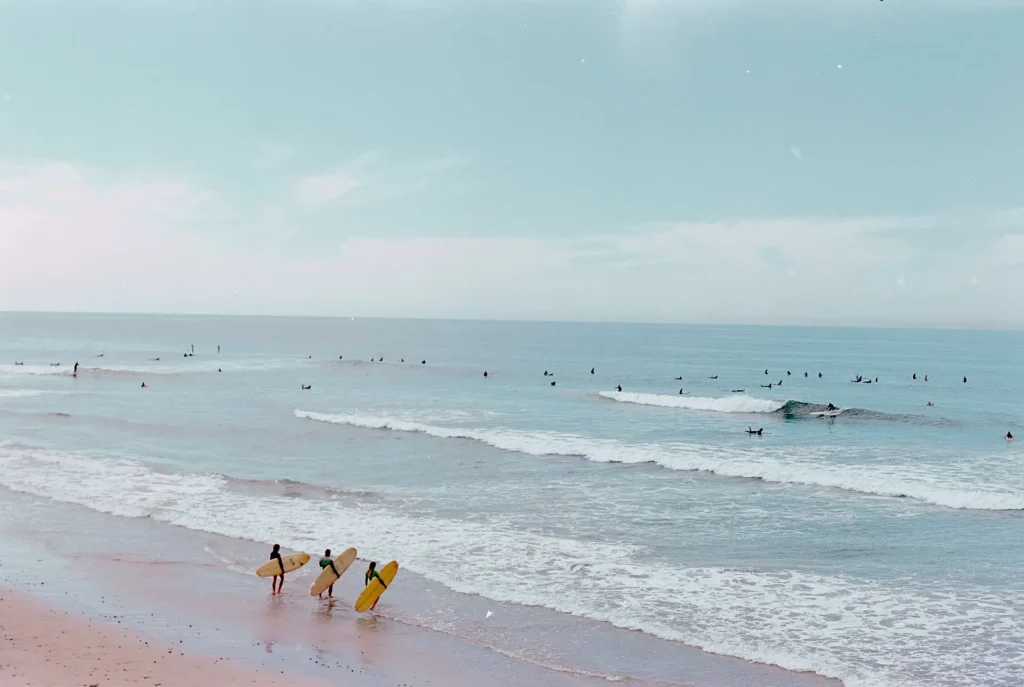
The Long Tail of Vitriol and Rebellion
Complaints about Kodak, predictions that film is dead, and worries about a price increase do little to affect Kodak but do, in fact, hurt The Darkroom, Nico’s Photography Show, The Kamerastore, Japan Camera Hunter, Silvergrain Classics, Acme Camera SLC, Negative Supply, Cine Still, The Film Photography Project, Kosmo Foto, pixl-latr, Chroma Camera, Intrepid, and everyone else you know and love that is working hard to build a sustainable business in analog photography. Let me explain.
On August 5, 2020, Kodak was given $765 million USD to produce hydroxychloroquine. Members of the film community joked about it but from my vantage point that was a scarier moment for analog photography than Fujifilm discontinuing a film stock.
Kodak manufactures many things in addition to film. Some stock analysts are predicting a future focus on chemical production. I have no idea if that will happen but it is at least plausible to hypothesize that Kodak has the potential for an opportunity to pivot toward other industries if film becomes too expensive or too much of a pain to produce. The same pivot argument cannot be made for the local camera store or film lab that popped up in your town during the film renaissance.
Kodak is a mega-company with a market cap of $560 million USD. A few rolls of film, or even a few thousand rolls of film, here and there, are rounding errors for Kodak. Conversely, losing a few dozen rolls of film here and there, or even a half dozen new analog photographer clients, could be devastating to a small business.
As an example of how and why painting a doom and gloom picture of analog photography because of a price increase and railing against Kodak hurts small businesses, let’s consider the butterfly effect of 7, hypothetical, young photographers in downtown San Diego who in 2021 were dissuaded from picking up a film camera because they were hearing about doom and gloom about film price increases, worries about the end of film, and encountered a generally negative environment in social medial regarding the future of film photography.
Those 7 young photographers will never buy a camera from my beloved Camera Exposure. They will never have their 20 rolls of film per year developed at The Darkroom. They will never go back to Camera Exposure and get their second, third, and fourth cameras. They certainly won’t go and order a home development kit from Cinestill. Finally, they also won’t buy a Negative Supply, Valoi, or Pixl-latr film carrier to scan their negatives at home. There is also no possible way they will buy a Revini spot meter. Over the course of a few years, those 7 photographers won’t be spending tens of thousands of dollars supporting the analog photography ecosystem. Now, think about what happens if there are 7 photographers, in every city, around the world, every year, who don’t pick up a film camera because they are worried about a price increase or filmpocalypse because of something they read on social media?
The butterfly effect of social media negativity and predictions of doom and gloom have an outsized effect on the long tail of photography (e.g. the small guy) rather than the intended audience of Kodak.
In a way, assuming that Kodak is trying to set themselves up for future profitability and success with the price increase, the main effect of Kodak’s recent price increase is keeping Cinestill, Negative Supply, and your local camera shop in business.
Leica Camera Owner’s Opinions?
Yes, you really do want people who own Leica cameras to complain about the price of film, but not too loudly. There is a meme going around the internet that goes something like “If I hear a Leica owner complain about the price of film, I am going to scream.” This is pretty funny but misguided for a number of reasons that bear consideration.
First, the basis of this meme is that Leica photographers have an unlimited bank account and can pay whatever they want for film. Although some certainly do, my experience at leicalensesfornormalpeople.com is that this is not an entirely accurate portrait of many Leica photographers. There is an entire skate and hipster crowd that is price sensitive and more normal than you think.
Second, I think we should all hope that everyone will complain about the price of film but maybe not as loudly as we have seen in recent days. Think about it, if all of the Leica photographers and enough other people are willing to pay $20, $30, or $40 per roll of film, and there are enough of them, that will become the new price and nobody wants that. A little bit of pushback on the film price or using a little less film is probably the best path forward.
Calling for a strike, mayhem, film embargo, or going on the socials and castigating the film companies for raising prices doesn’t do anyone any good. Going too far with the rhetoric, selling your film camera, and buying Fuji GFX (which seems to be a trend), will speed and not prevent the filmpocalypse.
An abrupt decrease in how much film is used would signal that the film market is fickle and maybe too price-sensitive to support investment moving forward.
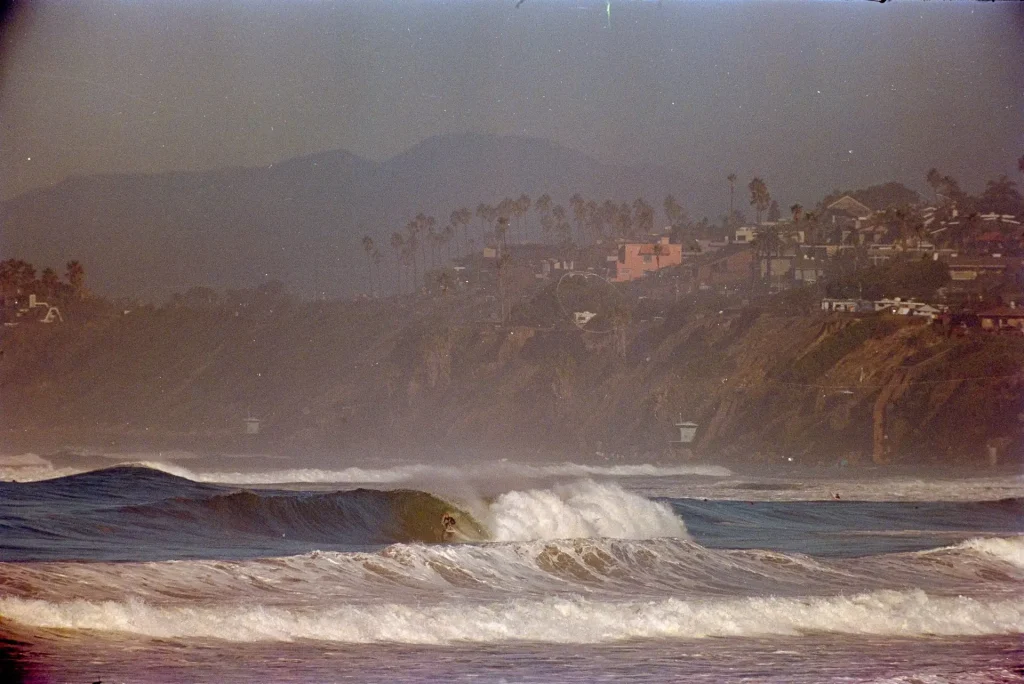
Film isn’t Insulin!
Kodak currently has a monopoly on film. For all intents and purposes that is a fact in 2021.
The response of the internet to that fact, however, is misguided. The internet assumes that Kodak can do whatever it wants because they are a monopoly and Kodak will raise prices forever because they are an unrestrained monopoly.
The problem with that thinking is that film is not insulin. If you are diabetic and you don’t get insulin – you will die. For a diabetic, it makes sense to pay whatever the drug company wants because money in the bank doesn’t help you if you suffering from complications related to diabetes.
If, on the other hand, you don’t get film because it is unavailable or too expensive, you just shoot digital or don’t make photographs at all. Nobody ever died because film was too expensive. Nobody goes bankrupt because of a film hobby. Film prices cant just keep going up indefinitely because people will just stop shooting film.
Neither you nor I know what the real price of film is or should be but you can expect Kodak to test the upper limit of what price the market can bear. Any fear that film prices will go up forever, however, ignores the self-correcting market effects that govern prices. If prices get too high, people stop shooting film and prices come down. If they go up and stay up, someone else will get in the game and then competition will bring prices down.
Even if you believe that corporations are run by greedy, narcissistic, power-hungry, men with a penchant to spend too much time in a locker room wound up on cocaine and HGH while they massage their low self-esteem and screw the little guy for sport, with a luxury item like film, HGH driven greed doesn’t operate in a vacuum. Film prices won’t go up forever.
While film prices are busy not rising to infinity you are encouraged to avoid reflexively attributing rising film prices to greed. Having been wrongfully accused of corporate greed in the past, and watching it happen to colleagues, I can assure you that in at least some cases, greed is often mistaken for incompetence and miscommunication. Neither you nor I have enough information to accurately assess how or why film prices are going to do what they will do in the next few years. We can only choose whether or not we purchase film moving forward.

The End of the World…?
Predictions about the world ending almost never come true. In an email exchange with Hamish about the current situation, I pondered whether I am old or stupid. I feel that I am getting old because “They” have been predicting the world will end since at least 1987 which is the first time I remember being told, “this time it is different.”
“They” said it about the stock market in 1997, 2008, and 2019/2020. They have been saying it about the housing market since I purchased my first home in 2003. In my residency in 1997, I was told that x-ray film (which is essentially the same as black and white film) would be gone before the end of my residency because silver and other chemicals would be too hard to come by; and I chose the wrong profession. They said Russia was going to take over and then Rocky 4 happened. Now they are saying it about China. They told me that Ski areas would fold by now because of global warming and I was an idiot to buy a snowboard in 1999.
None of these examples are directly related to film but they prove the point that even though it always feels like the world will end, and you can always find someone to reinforce your fear that the world will end, the world just keeps on not ending.
I feel old because I now have enough years behind me such that my first assumption is that nothing changes and the world won’t end. A few decades ago I would panic but now I know that in most cases we get the time horizons wrong. Change happens but it is almost never as fast as we want or expect.
At the same time, I feel stupid because maybe I am the only rube in the room not worrying as much as I should. Maybe this time it really is different.
Whether I am old or stupid or both, I know with absolute certainty that neither you, me, nor the guy or girl giving a dissertation on social media about how the end of film is near, how we are about to run out of silver, or that this time is different for any reason really knows what they are talking about. Social media is a good amplifier of ideas. It doesn’t mean that those ideas are valid.
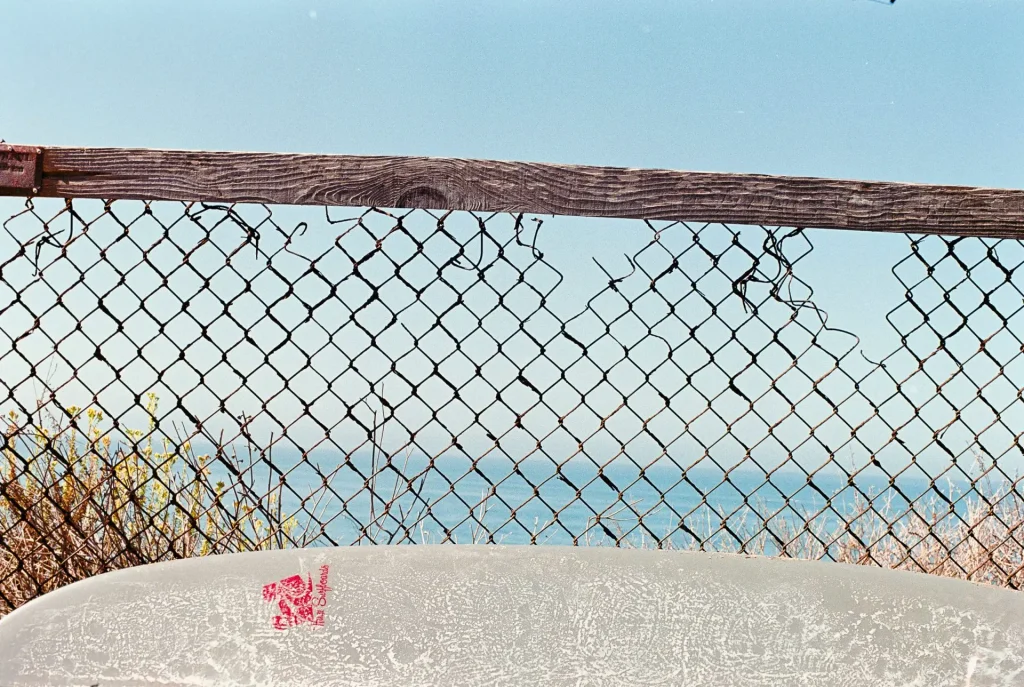
The Bottom Line
If this discussion about how our faulty thinking clouds our emotions, how the film price increase isn’t as bad as it sounds, and how we all might be having a communication problem rather than a real-world problem, please do complain about the film increase but consider turning down the volume. Maybe shoot a few rolls fewer but don’t stop shooting. Above all, don’t encourage young photographers to avoid analog because that will only hurt the small businesses that support our hobby.
A quick closing statement
This article was written by me, Matt Wright, with a little support from Hamish who agrees wholeheartedly with the contents above. If you would like to read more from me, please feel free to check out my website Leica Lenses for Normal People. You can also find me on Instagram: leicalensesfornormalpeople and themattwphoto
Share this post:


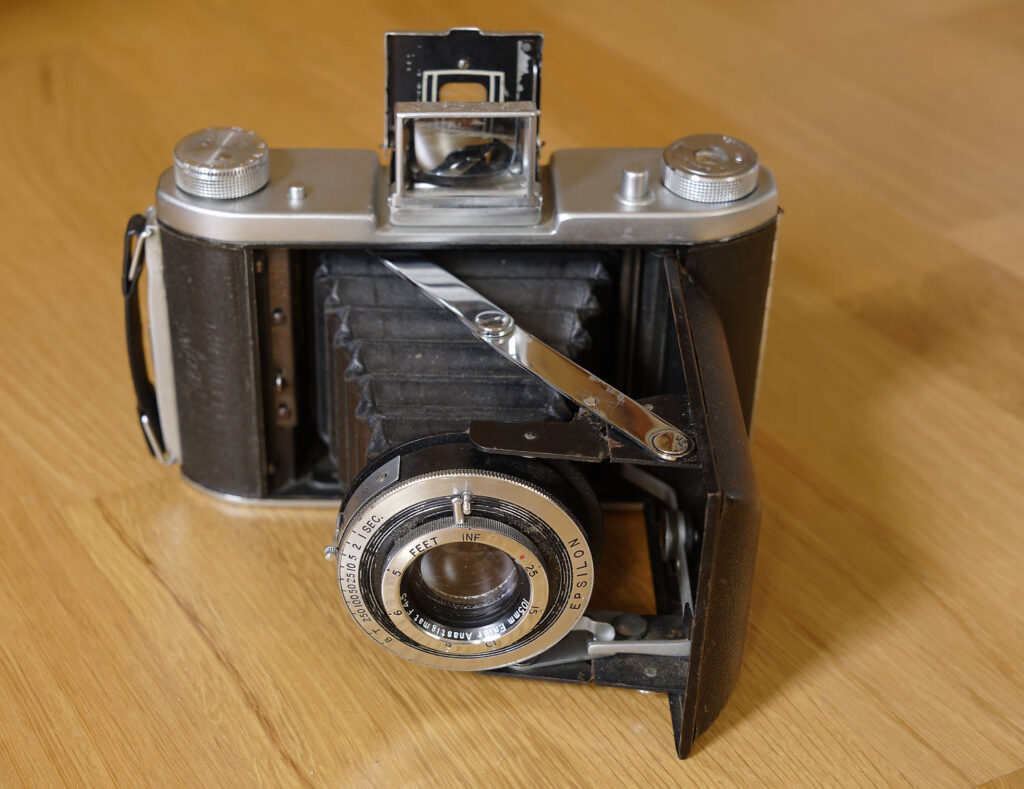

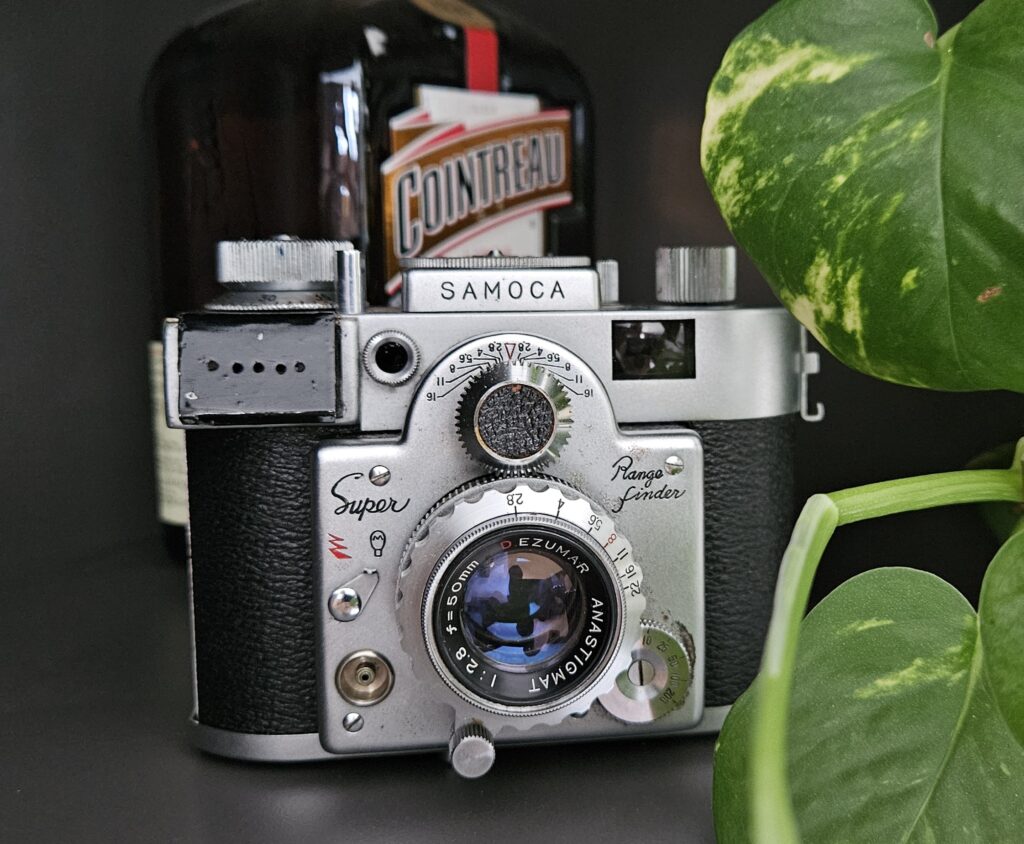




Comments
Gilberto on The Film Community has a Math Problem. Not a Film Price or Kodak Problem – By Matt Wright
Comment posted: 24/11/2021
Comment posted: 24/11/2021
Another Hamish on The Film Community has a Math Problem. Not a Film Price or Kodak Problem – By Matt Wright
Comment posted: 24/11/2021
Comment posted: 24/11/2021
Jeff on The Film Community has a Math Problem. Not a Film Price or Kodak Problem – By Matt Wright
Comment posted: 24/11/2021
Nik Stanbridge on The Film Community has a Math Problem. Not a Film Price or Kodak Problem – By Matt Wright
Comment posted: 24/11/2021
I’m about to switch from Kodak to Ilford because it is (or soon will be) getting on for half the price of Kodak stock. This is because the film I buy is a significant proportion of my income as a newly retired person. I’m not poor, don’t get me wrong, but it will be a useful economy.
Comment posted: 24/11/2021
Jay Dann Walker in Melbourne on The Film Community has a Math Problem. Not a Film Price or Kodak Problem – By Matt Wright
Comment posted: 24/11/2021
I live in the real world of photography. Not maths or statistics. I'm weary of film, paper, chemistry etcetera prices all going up, up, up. Every price increase from Kodak - is it just me, or is it a given in our world that Kodak does it more often than the other manufacturers of film? Not that Fuji is any slouch in this area either, but for the moment okay, let's stay with The Big Yellow Box From Rochester - drives X numbers of photographers away from film and over to digital. In my world this has happened so much now, only a handful of us 'old-timers' are still into film - the young shooters come and go, as much as you dislike it, sadly they mostly go.
Call it "faulty thinking" if you like, but with every year that passes, fewer and fewer photographers are shooting film. This is a given, price increases reflect the fact that less film is being sold (also that manufacturing film costs more, which this article didn't really go into in any depth). This said, one line you wrote really resonated with me - "t's true that film isn't insulin - in fact it's not even a necessity any more."
In my world, most of us are now shooting black-and-white film. More so than ever, we have all turned to digital for color, and we are unlikely to go back to film for this. I've had to accept this, as much as I enjoy shooting Portra with my Contax G1s... my Nikon D800 does it just as well, in fact far better, and oddly, given what I've written about "the price of fish" (= film) going up and up, my digiNikon cost me less to buy in 2013 than my G1 did in 1997. (I could write much more about how the cost of 120 film is now so high in Australia that I rarely use my Rolleiflex, but I think I've said enough.)
Statements such as “They” have been predicting the world will end since at least 1987 which is the first time I remember being told, “this time it is different.” read well but are meaningless to me. The world has changed beyond anybody's imagination in that time and there is nod denying this. Look at what communications, computers and photography were like 34 years ago and reflect for a moment how much it has all changed in that time.
Let's return now to photography. I believe that what will happen in photography the next ten years will be even more astounding, as energy prices escalate and the cost of everything skyrockets. We have seen this happening in everyday life since that damn Covid hit in 2020 and it will only go up. Change is inevitable.
My remarks are my opinions, and are meant as comments rather than criticisms. In a way, you have opened a Pandora's Box of a topic here, which may be more what you intended to do anyway. What you wrote made me think, and at my age (70 ) while I've seen it all and done it all (well, almost all), I enjoy being challenged to reconsider my position on many things I still hold dear. Film photography is high on my list.
In another ten years, well, photography will most likely no longer be a concern for me. But I do believe it will change. Film is no longer the way. It's enjoyable, it's fun - it's also getting too expensive for many who now prefer the ease and low cost of going digital. I don't particularly like it, but what I think about it won't change what will surely happen.
Entirely my "deux sous" as we used to say in Quebec. A part of me hopes I will be proven wrong in everything iIwrote...
So to sum all this up, a good article. Many thanks. I am greatly looking forward to the comments.
Comment posted: 24/11/2021
Steve Wilco on The Film Community has a Math Problem. Not a Film Price or Kodak Problem – By Matt Wright
Comment posted: 24/11/2021
Comment posted: 24/11/2021
Michael J on The Film Community has a Math Problem. Not a Film Price or Kodak Problem – By Matt Wright
Comment posted: 24/11/2021
People like to moan, and that's human nature but film is too much fun, too profound and too important to be risked with careless whinging being taken too seriously.
In Europe I think we have a slightly more diverse ecosystem of producers of film and chemistry. I quite like Kodak Tri-X Pan but not enough to pay double over Ilford HP5 Plus (before any price increase) however the culture of film photography is well nourished by the enthusiasm that blows across the Atlantic, and I wish those that practice it well.
Khürt L Williams on The Film Community has a Math Problem. Not a Film Price or Kodak Problem – By Matt Wright
Comment posted: 24/11/2021
I can either shoot fewer oops or 35mm film or shoot the same number of rolls of cheaper film.
The relationship is very simple. The manufacturer makes a thing and I choose whether that thing has value and I'm willing to lay to extract that value.
Comment posted: 24/11/2021
Daniel Castelli on The Film Community has a Math Problem. Not a Film Price or Kodak Problem – By Matt Wright
Comment posted: 24/11/2021
Excellent article! I can't agree more with your logical approach. When I was teaching, and the department head, we'd receive yearly directives from our administration outlining goals for the upcoming school year. A typical message might state: you want to see 15% of your students raise their reading comprehension by June 2012 (last year I taught before retiring.) Everyone would get in a panic, complain of an unrealistic target, complain of stress on the curriculum, etc. But, when they broke out the actual # of students that were affected, it turned out to be 3-4 students in a class. This was a goal that was easily achieved. Beware the % symbol!
In black & white photography, film cost can be offset by bulk loading film, or buying a 'pro pack' of 50 rolls. If you're a photographer who normally sends your film to a lab, learn to process film at home and buy a decent film scanner. Initial monetary outlay may be high, but within a year, you should realize a cost savings.
One last point: I started shooting black & white film in 1970. B&W was already becoming a niche market as color became more popular. That trend has continued, and I'd say for all intents and purposes, black & white is the domain of small, select circle of photographers. We almost represent a boutique market. Things will cost more. If you're a gearhead, and you work on your 1957 Chevy, you know parts are expensive. But you do it for the passion and joy of your hobby, not to make a profit.
Comment posted: 24/11/2021
Comment posted: 24/11/2021
Comment posted: 24/11/2021
Comment posted: 24/11/2021
Comment posted: 24/11/2021
Comment posted: 24/11/2021
Johnny Martyr on The Film Community has a Math Problem. Not a Film Price or Kodak Problem – By Matt Wright
Comment posted: 24/11/2021
And I think this is part of the cause of division in the film community.
The loudest spokespeople and influencers for the opinions represented in this article are folks like us who have a financial stake in the continuation of film photography. Hobbyists view this as bias. And factually, it is.
But ironically, the very reason that we have invested in film photography at a professional level is because we believe in it so much.
I think it's important that film professionals listen to and try to understand the concerns of shoe-string budget hobbyists. The case presented here is airtight. I don't have any other feedback because I'm in admiration of the clarity with which you've distilled and presented what so many of us are thinking.
But we also can't deny the value of the negative emotional reactions of those who disagree. After all, emotions are largely why we choose to drop a roll of Kodak instead of a Sandisk card into a camera! Positive and unionizing emotions are perhaps what we have to harness to keep the film community together. As opposed to pointing out incorrect logic. Maybe we can do both?
Thanks for putting this together.
Comment posted: 24/11/2021
David Luttmann on The Film Community has a Math Problem. Not a Film Price or Kodak Problem – By Matt Wright
Comment posted: 24/11/2021
Comment posted: 24/11/2021
Bob Janes on The Film Community has a Math Problem. Not a Film Price or Kodak Problem – By Matt Wright
Comment posted: 24/11/2021
Comment posted: 24/11/2021
Comment posted: 24/11/2021
Martin JONES on The Film Community has a Math Problem. Not a Film Price or Kodak Problem – By Matt Wright
Comment posted: 24/11/2021
The impact of a pandemic has been enormous, from the availability of raw materials and fuel prices through to the inefficiency of Covid-19 safe working. Throw in the additional trade complications of Brexit and the UK has a perfect storm.
There needs to be a dynamic and mutually appreciative relationship between the film producers and film consumers. We need film at a reasonable price, but we also need the film manufacturers to be profitable so that can invest in their business, be sustainable and innovate. Film producers are not the only manufacturers reacting to increasing costs; it's happening across all sectors. Shrinkflation is a commonly used trick - but a smaller pack for the same price doesn't really work for a 36 exposure film. Another option is to cut wages, but I would like to support the folks at Kodak, Ilford, Foma and so on being paid properly. The final option is to pass the costs on, but explain why to the consumer. This is the approach that Kodak have taken - perhaps they haven't got their comms quite right, but they are trying.
The coming years are going to be difficult for us all and rising prices are a fact of life. Europe has a competitive and diverse film manufacturing base, so prices will reduce if the cost base falls (seems unlikely in the short term). We need to support our preferred suppliers and keep things in perspective - would we rather that they pulled out?
Comment posted: 24/11/2021
Billy Sanford on The Film Community has a Math Problem. Not a Film Price or Kodak Problem – By Matt Wright
Comment posted: 24/11/2021
Comment posted: 24/11/2021
Comment posted: 24/11/2021
Nigel Kell on The Film Community has a Math Problem. Not a Film Price or Kodak Problem – By Matt Wright
Comment posted: 24/11/2021
Personally, I believe that a rapidly rising cost of film, way above even our current rather high rate of inflation, will lead to a negative feedback where declining sales lead to more increases in unit price, until the economic infrastructure collapses. Any hobby needs a steady influx of new blood, if only to replace the seniors as they pass on to the darkrooms in the sky, and the higher the costs involved, the fewer that will want to take the plunge. I think the "film revival" is not as secure as you would seem to think; how many of the current practioners will still be active in 5 years time? Or will some new retro hobby appeal......
Incidentally, after many years keeping dogs of intelligent working and herding breeds, advancing years saw us take in a Chihuahua. A more manipulative, crafty and intelligent dog I have not encountered!
Comment posted: 24/11/2021
Michael McDermott on The Film Community has a Math Problem. Not a Film Price or Kodak Problem – By Matt Wright
Comment posted: 25/11/2021
Andrew Bearman on The Film Community has a Math Problem. Not a Film Price or Kodak Problem – By Matt Wright
Comment posted: 25/11/2021
Everyone should ease up, buy more film, and support LeicaLensesforNormalPeople.com.
I think I spotted the Hamish part: any sentence with 'whilst' in it.
Love the Fairlane 500 wagon.
Comment posted: 25/11/2021
William Murray on The Film Community has a Math Problem. Not a Film Price or Kodak Problem – By Matt Wright
Comment posted: 25/11/2021
Too expensive is subjective, not objective.
Lockwood JK on The Film Community has a Math Problem. Not a Film Price or Kodak Problem – By Matt Wright
Comment posted: 25/11/2021
So now, 21 years later, people still lament the demise of film. And us old timers laugh. There are simply far too many better options in the market place. The laws of supply and demand are working flawlessly. Doing things the hard way, with chemical photography, doesn't make anyone more artistic or virtuous. Just like nobody's impressed that you shoot in manual mode. Or what brand of camera you use. Sure, I romanticize analog cameras and "the good old days" but it's a new day. A new way.
Now, go out and create a stunning image!
Tim Bradshaw on The Film Community has a Math Problem. Not a Film Price or Kodak Problem – By Matt Wright
Comment posted: 25/11/2021
So in the case of reversal film no, current prices have not gone up with inflation: they have hugely exceeded it. I don't have equivalent numbers for B/W (I only remember them for Kodachrome because I bought enough that I remember...) and I don't shoot C41 film, but I suspect something similar although perhaps less extreme. For those of us who print a similar thing has happened for paper.
For B/W chemistry costs are pretty tiny compared to film & paper costs, so almost all of the material cost of B/W is film & paper.
I am not saying that these increases are not justified: they may very well be. However for someone who shoots any significant amount of film the costs of supplies have gone up very significantly above inflation.
I think you're also perhaps underestimating the amount people shoot. I am not sure how many rolls I buy a year in normal times (none since early 2020), but I do know that if I'm going to take pictures of something over a week I'd typically take 20 rolls and shoot perhaps 10-15 of them (I know this because I have boxes of negs in sleeves labelled...). 20 rolls of TXP is ~£200 now (indeed TXP has gone up so much I now probably will be using HP5 as it's a lot cheaper). If I'm then going to make 30 12x16 prints from that film I'm probably looking at another £200 in paper (50 sheets, allow some work prints). In normal years I might do the equivalent of two or three such trips a year, as well as at least another 20 rolls of general walking-around photography.
So, perhaps I am at the outer edge of hobbyists, but the price increases of film are at the point where, for me, they are beginning to limit what I can do: this is not a few pounds a year increase, it's £100-£200. It's not going to stop me making photographs and I do not think film is dead ... but it is limiting what I can do.
Comment posted: 25/11/2021
Comment posted: 25/11/2021
Bill Brown on The Film Community has a Math Problem. Not a Film Price or Kodak Problem – By Matt Wright
Comment posted: 26/11/2021
Niche people are at the bottom of the overall business food chain. What I mean is the everyday consumer marketing tactics are not directed towards them. They are not the target audience. To a person not familiar with how a niche business operates it can seem to be insensitive to its supporters. Niche companies marketing to niche audiences operate on a different plane. I think most would consider Leica a niche company. Their attitude of "this is what it costs if you want to play in our game" can seem harsh or elitist to those not familiar with what it takes to keep a niche company viable.
Film photography is certainly a niche business so understanding that from the beginning I believe gives a whole different perspective to this story. In niche businesses there will be supporters that come and go and there will be that one group that stays on for the long haul. I'm certainly impacted by the price increase of Kodak film but cost was never the reason I chose their film in the first place. People taking their film business elsewhere only reinforces Kodaks niche status thereby contributing to making them move more towards niche marketing pathways.
I know what it means to be a niche supporter so I'm not at all surprised when prices go up and availability goes down. I'm the steady Eddie that's just happy to still be able to shoot film and more specifically Kodak. I know some will think I'm a Kool aid drinker but I know that a day will come that I will have to decide whether I'm going to continue on, move another direction, or walk away from it. How could I choose to just walk away from it you might ask. I'm a niche person, niche people think differently. They want what they want. You have to ask yourself, "why do I shoot film?". If you're not a niche person it's okay but don't malign me for supporting Leica, Kodak or some other niche company and I won't malign you for having that boat in your driveway that you take to the lake twice a year.
Comment posted: 26/11/2021
Greg L on The Film Community has a Math Problem. Not a Film Price or Kodak Problem – By Matt Wright
Comment posted: 28/11/2021
I’m mostly a Nikon guy (FE, FM3a, F6) but I also bought a Contax G2 and a Leica M3. With the exception of the FE (bought new in 1979 and still works flawlessly) I bought all of the above cameras over the course of the last decade used on ebay.
So yeah I guess I’m a “Leica shooter” too but my Leica is a 1964 M3 model that costs less than a new Z5 or D780, and will last essentially forever.
I am very happy shooting mostly slide film and get high res jpeg scans when i get the film developed.
I’m not a film snob either as I enjoy shooting my Df and D700 DSLRs. Heck, i can even create a raw file for selected slides or negatives using my Nikon Df and the ES-2 digitizing adapter if I so desire.
Since the price of shooting film for me is approximately $1 a shot, i like to think about the shot and get it right “straight out of the camera” before I press the shutter. This works for me because, as you may have guessed by now I am an old dinosaur that grew up shooting film so I shoot slow and deliberately. Might not apply to you if are shooting a lot of sports or fast action. But I suspect film shooters today are probably the slow and deliberate type.
I’m actually amazed i can still buy 35mm film from several different manufacturers in 2021 and hope it keeps on going!
So buy a whole bunch of film now, stick it in the freezer where it will last for years, buy a cheap digital camera for experimenting/trial and error for learning correct exposure techniques (so you don’t waste film), go shoot a whole bunch of film with your film camera and have fun! And you also are rewarded with a physical negative or slide and not just a file on a computer. ????
Happy Shooting!
Dex on The Film Community has a Math Problem. Not a Film Price or Kodak Problem – By Matt Wright
Comment posted: 28/11/2021
Russell Young on The Film Community has a Math Problem. Not a Film Price or Kodak Problem – By Matt Wright
Comment posted: 29/11/2021
I then jumped to the ABOUT page. Point #2 under "are You a Normal Person?" notes "Your budget is under $1500/lens." That doesn't define "normal" to me, either. I have whole systems (e.g., Pentax MX with 50mm f/1.4 lens, 28mm f/3.5 lens, 85mm f/2 lens) for less than half that price for just one lens, not mention the body cost. They are also generally less expensive to repair than Leica gear.
Fifty plus years in the darkroom has taught me that prestigious equipment doesn't necessarily translate into best quality equipment. I've owned Leicas and have sold them all except the CL. My rigs perform as well or better for far less monetary outlay. I'd be happy to match other film era lenses against Leitz lenses of the same era any day.
Comment posted: 29/11/2021
Comment posted: 29/11/2021
Ben Garcia on The Film Community has a Math Problem. Not a Film Price or Kodak Problem – By Matt Wright
Comment posted: 29/11/2021
Christo on The Film Community has a Math Problem. Not a Film Price or Kodak Problem – By Matt Wright
Comment posted: 03/12/2021
Fazal Majid on The Film Community has a Math Problem. Not a Film Price or Kodak Problem – By Matt Wright
Comment posted: 03/12/2021
Another factor is know-how, a lot of how to coat gelatin and so on is more art than science and the people who knew are mostly retired. Fuji has adapted the tech to making pharmaceuticals but in any case those factories will no longer be able to operate for lack of trained personnel.
Finally Eastman Kodak is not a mega-corporation any more. Eastman Chemical, their former chemical business spun out in 1992 is worth $14B (your water bottle is probably made out of their BPA-free Tristan plastic). Eastman Kodak is a small player in the professional printing industry and Kodak Alaris, their former UK division owned by their UK former employee pension fund, is almost certainly far more valuable, mostly because they make document scanners.
Comment posted: 03/12/2021
Sunny on The Film Community has a Math Problem. Not a Film Price or Kodak Problem – By Matt Wright
Comment posted: 08/01/2022
Trying to shut down people's voices over this issue by saying that it will hurt the little guy is also wrong and contributes nothing to some long-term solution.
Kodak is slowly but surely cooking its consumers and that is enabling them to postpone the emergence of a new viable film player.
Generally, I didn't like your article as I find your tone and what you wrote problematic.
Amaranth on The Film Community has a Math Problem. Not a Film Price or Kodak Problem – By Matt Wright
Comment posted: 10/01/2022
And to presume that all people who shoot film are simply "hobbyists" is also rather obtuse, leaving aside artists and professionals who use this film in a professional capacity. The increase in film costs increases what I have to charge my clients, not marginally but by a lot when shooting 3-4 rolls for a project and factoring in additional costs (development, scanning, printing.) I've started resorting to doing some of that stuff myself, which takes buckets of time in place of the money.
Look--it's hardly even about that. It's unfortunately pushing people out of being able to shoot film at all. It's already expensive to shoot as is, but as the prices raise, more and more people will gravitate toward digital and slowly film will become less and less accessible. So many incredible films are already completely off the market, and it's really only a matter of time before they drop off completely. Soon, film will just be a niche resource that only wealthy people can afford, as it once was when photography was first invented.
(You can say it's a negligible increase, but in 2018 I could buy a 5 pack of Portra for $29, which now costs $60-$70.)
Amaranth on The Film Community has a Math Problem. Not a Film Price or Kodak Problem – By Matt Wright
Comment posted: 10/01/2022
Jaye Seah on The Film Community has a Math Problem. Not a Film Price or Kodak Problem – By Matt Wright
Comment posted: 22/07/2022
Gio on The Film Community has a Math Problem. Not a Film Price or Kodak Problem – By Matt Wright
Comment posted: 25/07/2022
Current consumer kodak colorplus price: 16.99$ a roll
Comment posted: 25/07/2022
Scott on The Film Community has a Math Problem. Not a Film Price or Kodak Problem – By Matt Wright
Comment posted: 28/08/2022
The last time I purchased film ( Nov 2020/Kodak Color & Ilford BW) both 120 ProPacks prices for BW were in the $5.00 a roll range, colour in the $7.00 range. Right now colour is $12., BW $8.
With 10 frames per roll, prices just to expose a single frame (not including process/scan) are over $1. with BW near that.
We are approaching a 100% increase in prices over less than 2 years. This is unsustainable!
ie: This will deteriorate the use/demand/utility of film, harming all businesses associated with film imaging.
For starving artists (most) film isn’t a “luxury item”.
MikeV on The Film Community has a Math Problem. Not a Film Price or Kodak Problem – By Matt Wright
Comment posted: 03/11/2022
Comment posted: 03/11/2022
Tomas Haran on The Film Community has a Math Problem. Not a Film Price or Kodak Problem – By Matt Wright
Comment posted: 09/02/2023
Comment posted: 09/02/2023
Insta Finsta on The Film Community has a Math Problem. Not a Film Price or Kodak Problem – By Matt Wright
Comment posted: 22/08/2024